EIA Drilling Productivity Report Update – Jun ’20
According to the EIA’s June Drilling Productivity Report, U.S. oil output is expected to decline to a two year low level throughout the month of July. The Drilling Productivity Report uses recent data on the total number of drilling rigs in operation, estimates of drilling productivity, and estimated changes in production from existing wells to provide estimated changes in oil production for the seven key regions shown below.
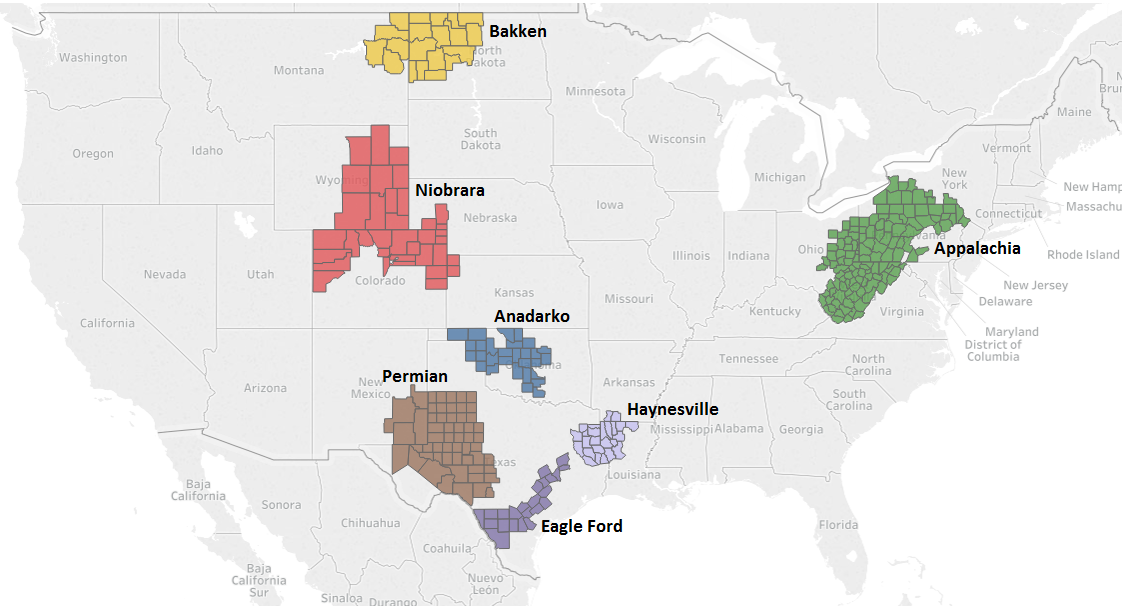 Jun ’20 production levels were revised 97,000 barrels per day (bpd), or 1.2%, below levels previously forecasted, finishing 213,000 bpd, or 2.7%, below May ’20 production levels. Jul ’20 production levels are expected to decline an additional 91,000 bpd, or 1.2%, from the Jun ’20 revised production levels to 7.63 million bpd, finishing at a two year low level.
Jun ’20 production levels were revised 97,000 barrels per day (bpd), or 1.2%, below levels previously forecasted, finishing 213,000 bpd, or 2.7%, below May ’20 production levels. Jul ’20 production levels are expected to decline an additional 91,000 bpd, or 1.2%, from the Jun ’20 revised production levels to 7.63 million bpd, finishing at a two year low level.
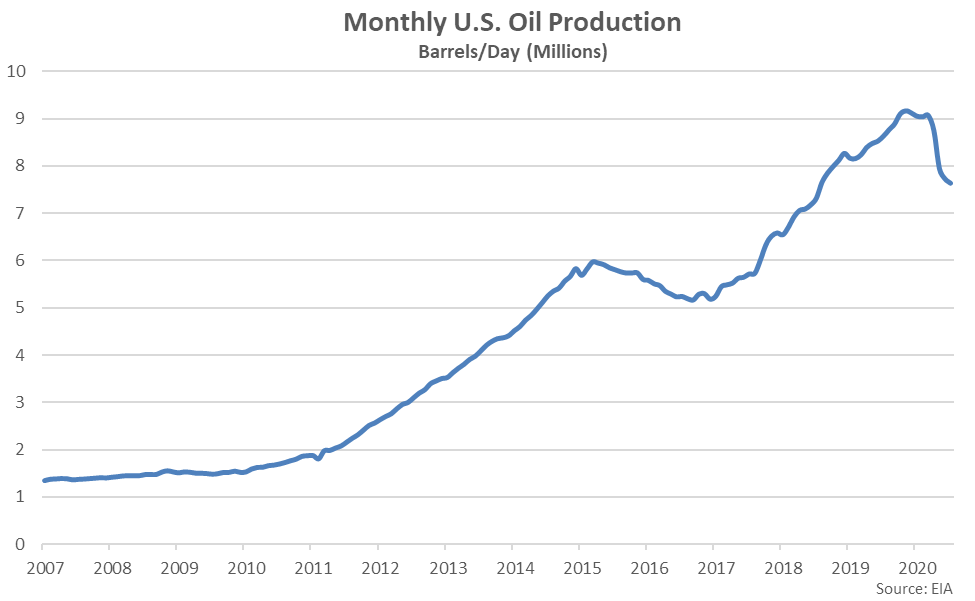 The Jul ’20 projected month-over-month decline in oil production would be the fourth experienced in a row but the smallest experienced throughout the four month period.
The Jul ’20 projected month-over-month decline in oil production would be the fourth experienced in a row but the smallest experienced throughout the four month period.
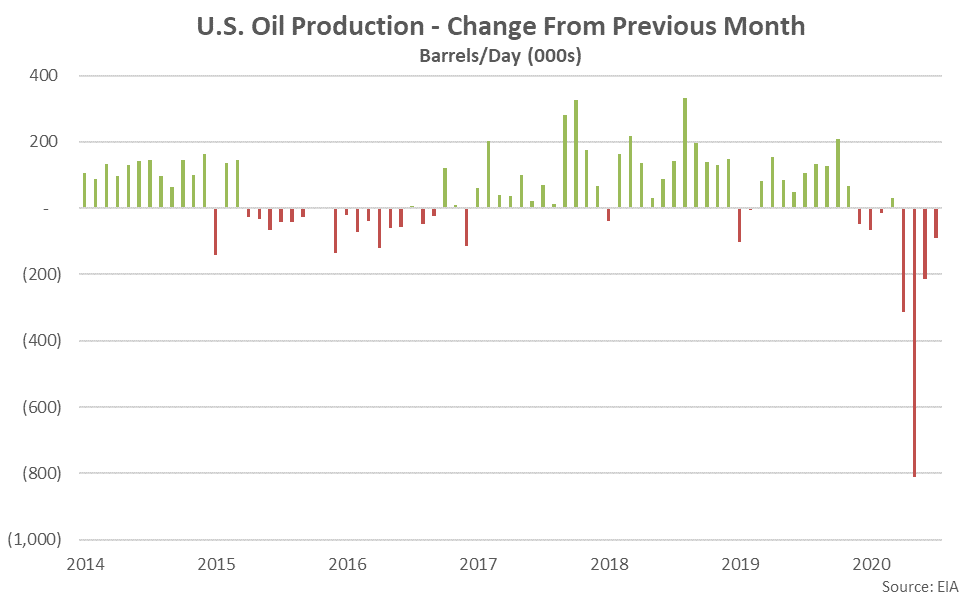 Oil production is expected to decline most significantly from the previous month within the Eagle Ford region (-28,000 bpd), followed by the Anadarko (-26,000 bpd) and Niobrara (-25,000 bpd) regions. The aforementioned regions combined to account for over three-quarters of the total month-over-month decline in production.
Oil production is expected to decline most significantly from the previous month within the Eagle Ford region (-28,000 bpd), followed by the Anadarko (-26,000 bpd) and Niobrara (-25,000 bpd) regions. The aforementioned regions combined to account for over three-quarters of the total month-over-month decline in production.
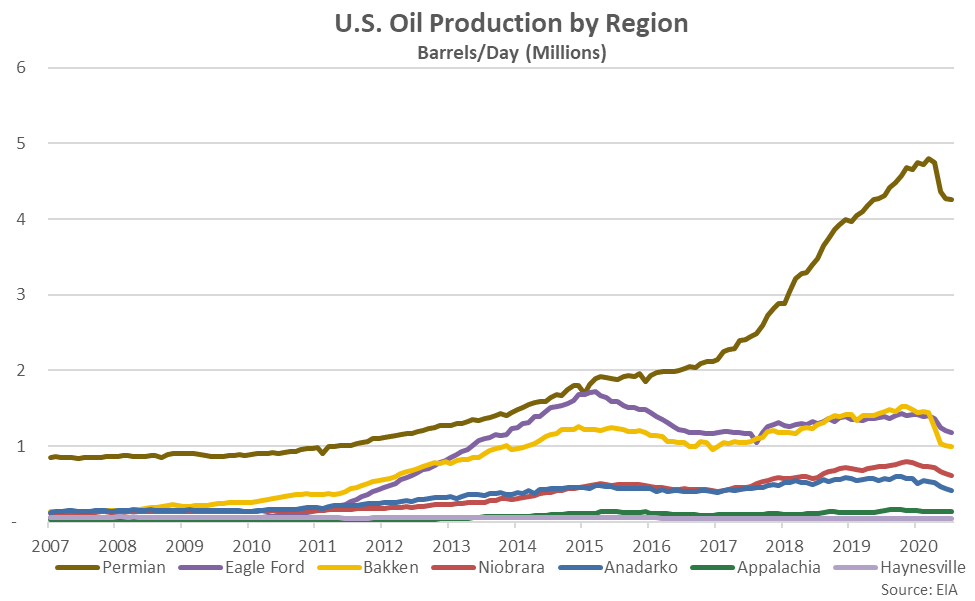 Jul ’20 oil production is expected to decline on a YOY basis for the third consecutive month, finishing 11.5% below previous year levels. The YOY decline in production would be the largest on record on a percentage basis. EIA drilling productivity figures have been published since 2007.
Jul ’20 oil production is expected to decline on a YOY basis for the third consecutive month, finishing 11.5% below previous year levels. The YOY decline in production would be the largest on record on a percentage basis. EIA drilling productivity figures have been published since 2007.
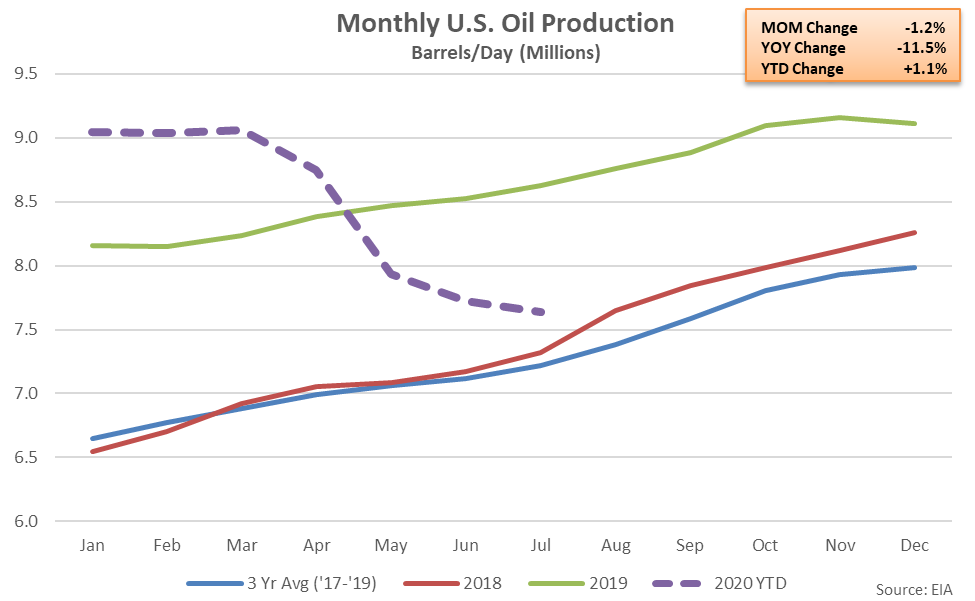 U.S. drilled-but-uncompleted (DUC) wells continued to decline from the May ’19 record highs, finishing lower for the 12th consecutive month. DUC wells, which have been drilled by producers but have not yet been made ready for production, have been compiled since Dec ’13. The May ’20 DUC wells figure of 7,591 finished 0.4% below the previous month, reaching an 18 month low level.
U.S. drilled-but-uncompleted (DUC) wells continued to decline from the May ’19 record highs, finishing lower for the 12th consecutive month. DUC wells, which have been drilled by producers but have not yet been made ready for production, have been compiled since Dec ’13. The May ’20 DUC wells figure of 7,591 finished 0.4% below the previous month, reaching an 18 month low level.
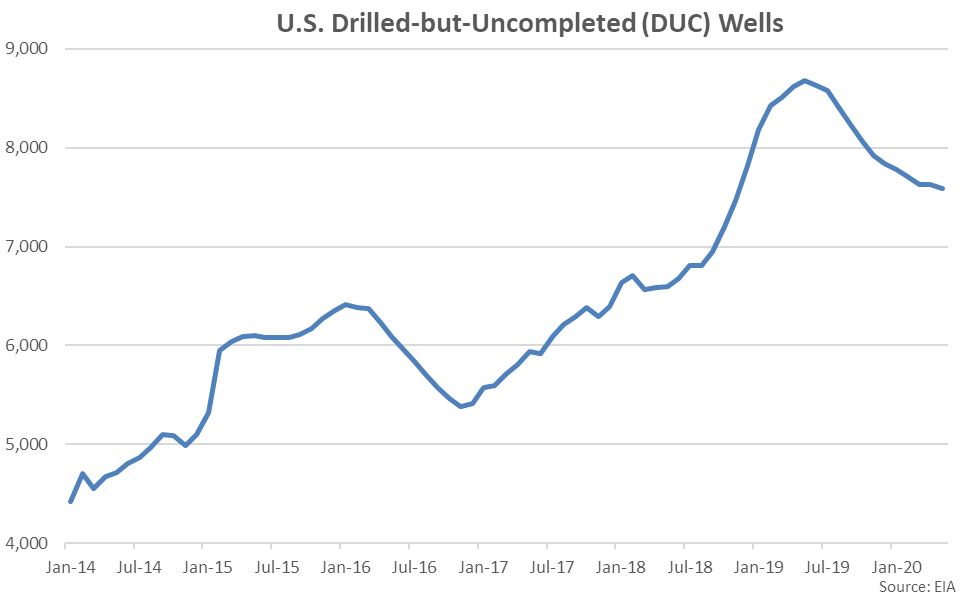 Anadarko DUC wells declined most significantly from the previous month throughout May ‘20, followed by Eagle Ford DUC wells and Appalachia DUC wells. Permian DUC wells rebounded to an eight month high level, however.
Anadarko DUC wells declined most significantly from the previous month throughout May ‘20, followed by Eagle Ford DUC wells and Appalachia DUC wells. Permian DUC wells rebounded to an eight month high level, however.
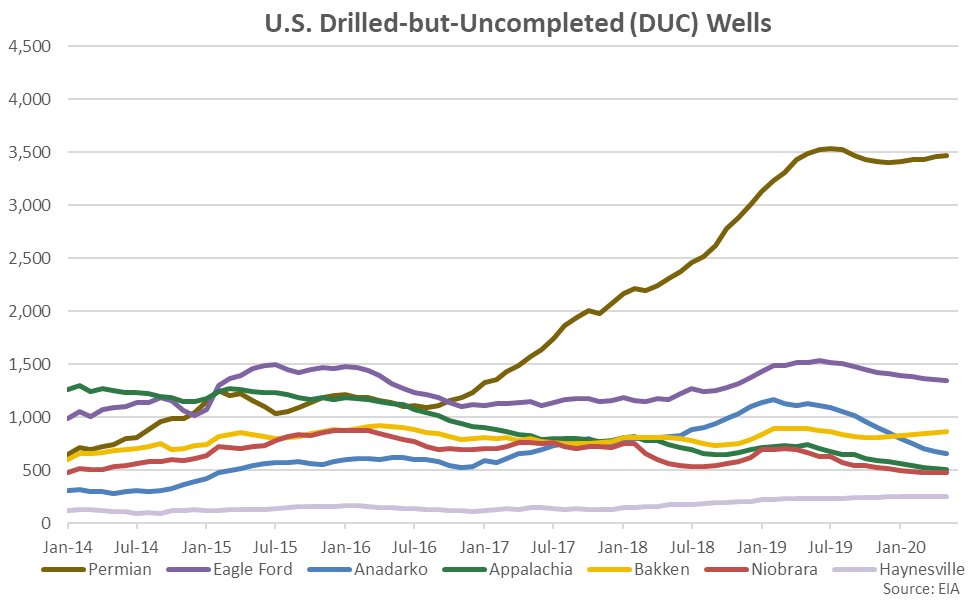
 Jun ’20 production levels were revised 97,000 barrels per day (bpd), or 1.2%, below levels previously forecasted, finishing 213,000 bpd, or 2.7%, below May ’20 production levels. Jul ’20 production levels are expected to decline an additional 91,000 bpd, or 1.2%, from the Jun ’20 revised production levels to 7.63 million bpd, finishing at a two year low level.
Jun ’20 production levels were revised 97,000 barrels per day (bpd), or 1.2%, below levels previously forecasted, finishing 213,000 bpd, or 2.7%, below May ’20 production levels. Jul ’20 production levels are expected to decline an additional 91,000 bpd, or 1.2%, from the Jun ’20 revised production levels to 7.63 million bpd, finishing at a two year low level.
 The Jul ’20 projected month-over-month decline in oil production would be the fourth experienced in a row but the smallest experienced throughout the four month period.
The Jul ’20 projected month-over-month decline in oil production would be the fourth experienced in a row but the smallest experienced throughout the four month period.
 Oil production is expected to decline most significantly from the previous month within the Eagle Ford region (-28,000 bpd), followed by the Anadarko (-26,000 bpd) and Niobrara (-25,000 bpd) regions. The aforementioned regions combined to account for over three-quarters of the total month-over-month decline in production.
Oil production is expected to decline most significantly from the previous month within the Eagle Ford region (-28,000 bpd), followed by the Anadarko (-26,000 bpd) and Niobrara (-25,000 bpd) regions. The aforementioned regions combined to account for over three-quarters of the total month-over-month decline in production.
 Jul ’20 oil production is expected to decline on a YOY basis for the third consecutive month, finishing 11.5% below previous year levels. The YOY decline in production would be the largest on record on a percentage basis. EIA drilling productivity figures have been published since 2007.
Jul ’20 oil production is expected to decline on a YOY basis for the third consecutive month, finishing 11.5% below previous year levels. The YOY decline in production would be the largest on record on a percentage basis. EIA drilling productivity figures have been published since 2007.
 U.S. drilled-but-uncompleted (DUC) wells continued to decline from the May ’19 record highs, finishing lower for the 12th consecutive month. DUC wells, which have been drilled by producers but have not yet been made ready for production, have been compiled since Dec ’13. The May ’20 DUC wells figure of 7,591 finished 0.4% below the previous month, reaching an 18 month low level.
U.S. drilled-but-uncompleted (DUC) wells continued to decline from the May ’19 record highs, finishing lower for the 12th consecutive month. DUC wells, which have been drilled by producers but have not yet been made ready for production, have been compiled since Dec ’13. The May ’20 DUC wells figure of 7,591 finished 0.4% below the previous month, reaching an 18 month low level.
 Anadarko DUC wells declined most significantly from the previous month throughout May ‘20, followed by Eagle Ford DUC wells and Appalachia DUC wells. Permian DUC wells rebounded to an eight month high level, however.
Anadarko DUC wells declined most significantly from the previous month throughout May ‘20, followed by Eagle Ford DUC wells and Appalachia DUC wells. Permian DUC wells rebounded to an eight month high level, however.
